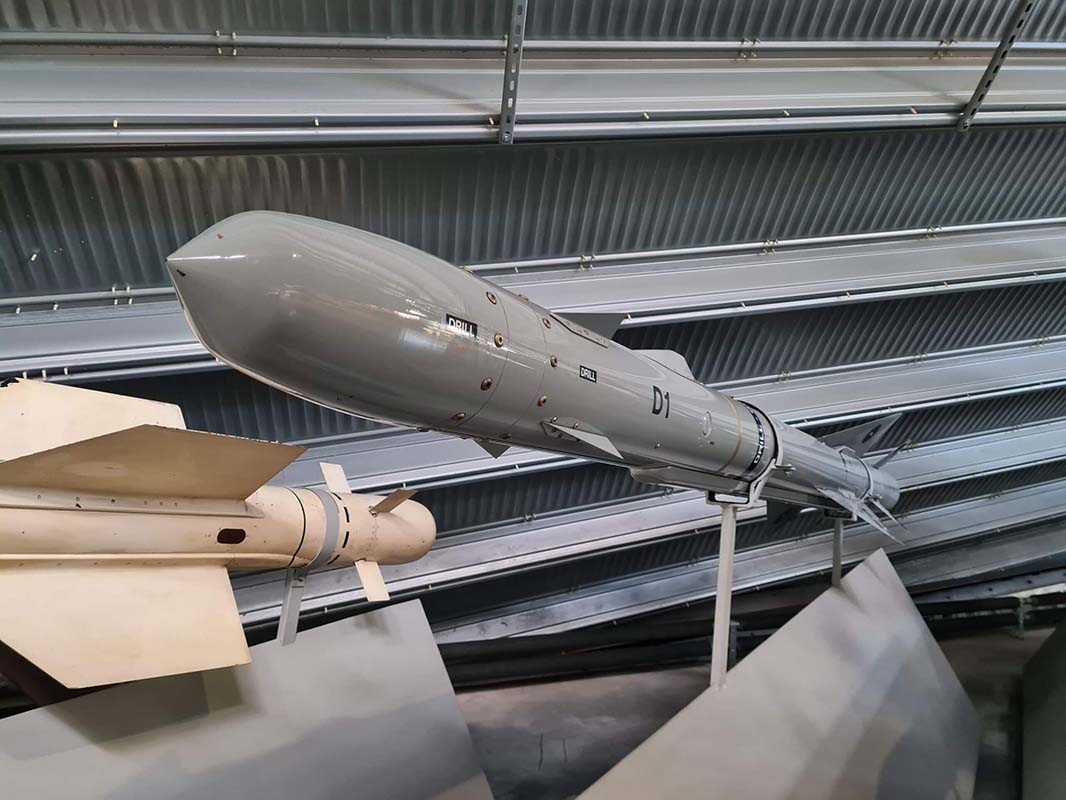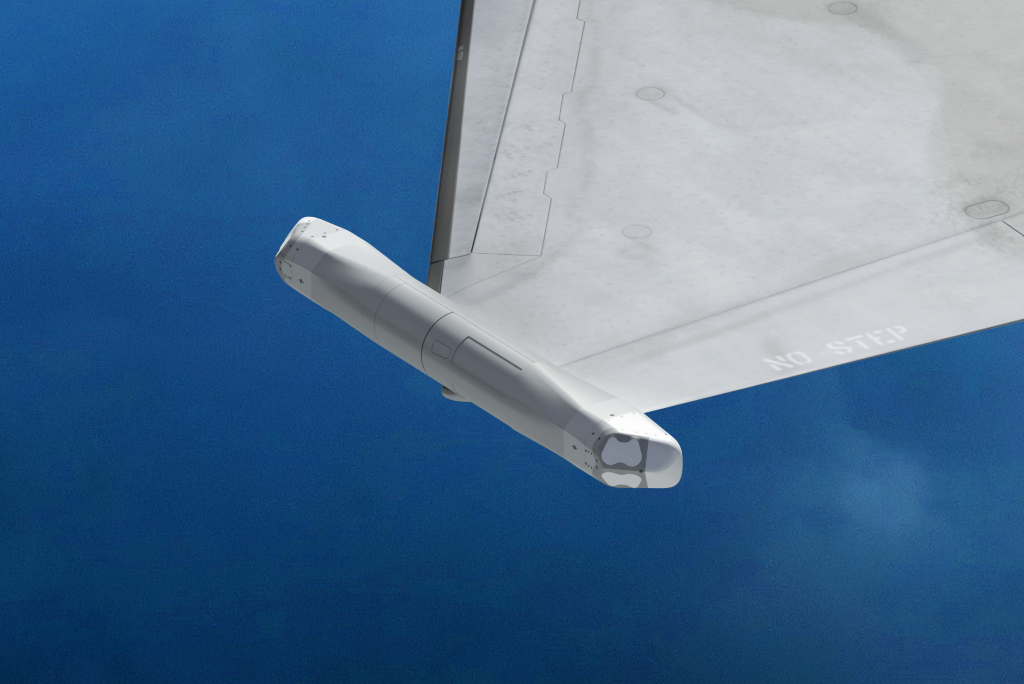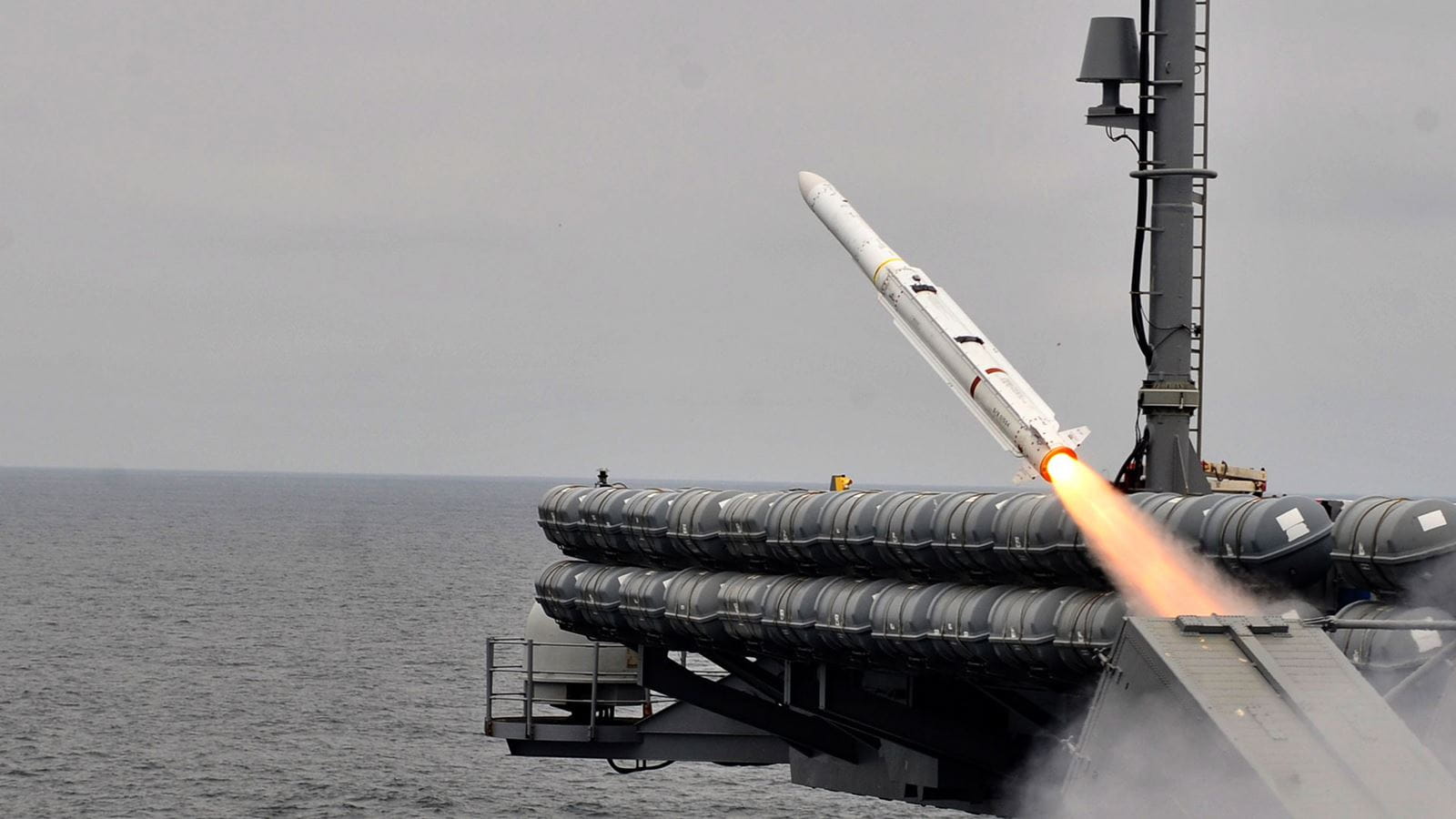NATO’s European members are set to receive much-needed muscle in kinetic anti-radar capabilities thanks to a new continental missile programme.
European suppression of enemy air defence (SEAD) is back in business. The post-Cold War years, and global counter-insurgency operations witnessed in the 2000s and 2010s, made the SEAD mission set airpower’s unloved stepchild. What was the point of maintaining robust SEAD forces across NATO’s European membership when Russia was no longer considered a threat? In numerous conflicts around the world, older ground-based air defence (GBAD) systems lay in ruins. US- and NATO-led coalitions had gone to war in the Balkans, Libya and Iraq between 1990 and 2011. The GBAD capabilities like surface-to-air missiles (SAMs) and anti-aircraft artillery (AAA) these adversaries deployed, were smashed. The SEAD doctrines followed by the US and NATO shattered these air defences. Kinetic efforts in this regard were helped in no small measure by anti-radiation missiles (ARMs).
ARMs hunted down and struck ground-based air surveillance and fire-control/ground-controlled interception radars. IADs relied on these radars to detect incoming hostile airpower, and to direct fighters towards their targets. SAM and AAA batteries used radars to acquire their targets and guide their ordnance accordingly. The Texas Instruments/Raytheon AGM-88 series High-Speed Anti-Radiation Missile (HARM) was the primary US/NATO weapon for the anti-radar mission during these conflicts. An honourable mention should also be made for the British Aerospace/MBDA Air-Launched Anti-Radiation Missile, better known as ALARM. ALARM was the last dedicated anti-radar weapon deployed by the Royal Air Force (RAF), although that may change in the future as this article will explain.
The Armée de l’Air et de l’Espace (French Air and Space Force) likewise got out of the ARM business in 1997 with the retirement of the Matra/MBDA ARMAT (Anti-Radar Matra) weapon. ARMAT was an improved version of the British Aerospace/Matra AS-37 MARTEL (missile, anti-radiation, television). European NATO members have hitherto relied on the following dedicated SEAD assets: Circa 24 United States Air Force (USAF) ‘Wild Weasel’ F-16CJ/DJs, colloquially referred to as ‘Viper Weasels’. Based out of Spangdahlem airbase, western Germany, the Viper Weasels deploy with AGM-88 series missiles, among various others.
The Luftwaffe (German Air Force) has 28 Panavia Tornado-ECR electronic attack aircraft serving with the Taktisches Luftwaffengeschwader 51 (51 Tactical Air Wing). Thirteen similar aircraft are flown by the Aeronautica Militare (Italian Air Force). Both the German and Italian Tornado-ECRs deploy the Northrop Grumman AGM-88E Advanced Anti-Radiation Guided Missile (AARGM), which is one of the latest members of the venerable AGM-88 family. Apart from a smattering of countries deploying older variants of AGM-88, chiefly the AGM-88B, and some like Poland which have ordered the most recent member of the AGM-88 family – the AGM-88G AARGM-ER – that is about it. Moreover, these latter countries arguably use HARM for the tactical self-protection of individual aircraft and strike packages in contested airspace. This makes it unlikely that these aircraft would deploy HARMs against pre-briefed GBAD targets. The latter mission is vital to aiding the operational battle by punching ingress and egress routes through enemy airspace. Operational SEAD is the task of the German, Italian and USAF aircraft.
Uncle SAM
It has been fashionable in some parts of the airpower community to argue that European NATO members cannot perform operational-level SEAD without USAF support. An analysis performed earlier in 2025 by your correspondent argued against this position. The analysis examined previous US- and NATO-led air campaigns against Iraq, Libya and Serbia. The study measured the quantity of ARMs expended by the coalitions during these air campaigns, physical theatre size, the size of the coalition air component and the air campaign’s duration. The analysis concluded that European NATO members could mount a successful air campaign against Russian IADS and GBAD assets deployed in the Moscow and Leningrad military districts in western and northwestern Russia sans US support. Given the lukewarm support of President Donald Trump, and his cohorts, to NATO and European security, this is reassuring.
One striking aspect of European airpower is that neither the RAF nor its French counterpart maintain dedicated SEAD forces and capabilities: The RAF formally retired ALARM in 2013, with the French Air and Space Force retiring ARMAT 16 years earlier. The argument could be made that maintaining dedicated SEAD forces, à la the Luftwaffe and Aeronautica Militare is now pointless. Fifth-generation combat aircraft like the Lockheed Martin F-35A/B/C can perform a host of missions. Indeed, the USAF has elected to fold the SEAD task into the general mission set of the F-35A. This jet will be teamed with the AGM-88E/G missiles for the task.

Nonetheless, it is instructive that the Luftwaffe is moving ahead with the purchase of 15 Eurofighter Typhoon-EK dedicated SEAD jets as part of LUWES (Luftgestützte Wirkung im Elektromagnetischen Spektrum/Airborne Effects in the Electromagnetic Spectrum) initiative. The current Luftwaffe Tornado-ECR, and subsequent LUWES programme, forms a dedicated European SEAD force to perform the mission on NATO’s behalf in wartime. Sources have told the author that Italy will not follow Germany in ordering the Typhoon-EK for the SEAD task. Instead, it will follow the American’s lead in folding the mission, and the AGM-88E, into its F-35A force.
Electric dreams
Despite the F-35’s multi-role capability, it seems that the SEAD posture of European NATO members is being downsized at precisely the moment when a belligerent Russia should be forcing it to do the opposite. Yes, the F-35A is a potentially potent SEAD platform; nonetheless, in wartime, a finite number of aircraft will be in demand for competing missions. How does one commander desperately needing operational SEAD support compete with another desperately needing the F-35 as a tactical strike platform? The attraction of the German and Italian Tornado-ECR SEAD forces is that this mission is their core business. Fortunately, a compromise may be in the offing which will deepen Europe’s SEAD posture without recourse to dedicated units.
The French Air Force, together with the RAF and Aeronautica Militare, may receive new SEAD weapons over the coming decade. To be fair, the RAF is already beefing up its air defence suppression capabilities: In May 2025, the force announced it was acquiring the Tekever/Leonardo StormShroud unmanned aerial vehicle (UAV). This UAV is based on Tekever’s AR3 design and equipped with Leonardo’s BriteStorm stand-in jamming payload, which is designed to fool the ground-based radars supporting GBAD units away from potential targets. How the aircraft does this is classified, but it is likely to involve using a digital radio frequency memory (DRFM). The DRFM will generate spoof radar signals that mimic the radar cross sections (RCSs) of actual combat aircraft to encourage a radar to illuminate the UAVs rather than the former. Alternatively, the StormShroud may hand air defenders a tactical dilemma: Which is the actual strike package and which are the decoys? Both will be all but electromagnetically impossible to distinguish from one another. The RAF already received an initial batch of StormShroud UAVs in May 2025.

Although not yet funded by the United Kingdom’s Ministry of Defence (MoD), the RAF may receive the MBDA SPEAR-EW (Selective Precision Effects at Range–Electronic Warfare) stand-in jammer. SPEAR-EW is a member of the company’s SPEAR family and has an electronic attack payload mounted in the missile fuselage in place of a warhead. Flying at stand-in ranges (though able to be launched from stand-off ranges), SPEAR-EW would jam GBAD radars as a means of opening the door for strike packages entering contested airspace. Taken together, the StormShroud and SPEAR-EW would be a potent combination. Assuming SPEAR-EW is procured, it would be expected to enter service from the early 2030s. The round is earmarked for the RAF’s F-35Bs, as well as their forthcoming F-35As, and F/GR4A Eurofighter Typhoon series jets.
Coming to a theatre near you
Electronic trickery like StormShroud and SPEAR-EW is undoubtedly vital for the SEAD fight, but this is a battle which must also include kinetics. Certainly, NATO air forces have a host of air-to-surface ordnance they can throw at GBAD targets. Nonetheless, in battle there will be many calls on this ordnance, air defence suppression being but one. ARMs have the benefit that they home in on the very signal the radar is transmitting, exploding close to the antenna. Jamming is good, but an expensive radar wrecked by an anti-radiation missile is probably taken out of the fight for good. At the very least the radar will not be functioning for a prolonged period while repairs are made. Tactically, anti-radiation missiles place air defenders in a dilemma: Leave the radar switched on and you can detect, identify and track potential targets for GBAD assets to engage, but risk being targeted by ARMs. Or switch the radar off, and you may be safe from ARM attack, but be unable to help prosecute air targets, meaning your own airspace is less contested. Iraqi, Serbian and Libyan air defenders learned the hard way. Keeping their radars switched on invited a visit from a HARM or ALARM. Eventually, they largely kept off their airwaves. Nonetheless, this tactic helped to effectively hand US- and NATO-led coalitions air superiority and then air supremacy.

Moreover, switching off the radar does little good these days. The AARGM and AARGM-ER missiles are equipped with an inertial navigation system (INS) and global navigation satellite system (GNSS) receivers. The GNSS receiver uses the encrypted P(Y) code transmitted by the US GPS navigation satellite constellation. It will also use the new military M-Code signal that will eventually replace P(Y) code in the coming years. The radar’s coordinates can be loaded into the INS/GNSS before or during the mission. Should the radar execute the ‘switch-off’ tactic, it will make little difference since the missile will ‘remember’ the coordinates of the radar and continue the attack.
Your correspondent has often questioned why the RAF and French Air and Space Force opted to forsake ARMs during the intervening years. A common response received from individuals in both forces in the years of counter insurgency was there was little need for the SEAD mission which, at the time, was a fair argument. Furthermore, money is not finite. Choosing to procure one capability invariably means another capability, existing or planned, gets no cash. Multirole weapons may be one way around this budgetary reality.
Showcased
A trio of nations comprising France, Italy and the United Kingdom may purchase new missiles optimised for multiple missions in the guise of MBDA’s Stratus family, comprising two missiles: Stratus-LO (Low-Observable) and Stratus-RS (Rapid Strike). Stratus is envisaged as a weapons system for 6th-generation combat aircraft being developed under the Future Combat Air System (FCAS) and Global Combat Air Programme (GCAP) programmes. Nonetheless, the author understands that the missile will be backwards compatible with legacy platforms, including the FREMM and Type 26 Frigates, along with the Eurofighter Typhoon and Rafale fighter aircraft.

Mock-ups of both Stratus missiles were on show at DSEI 2025 exhibition. The author was told by sources close to the programme that the two missiles will perform four missions; deep strike, anti-ship, air-to-air and anti-radar, the latter forming a key part of the SEAD mission. MBDA has developed missile body and motors for each missile, along with a mission-specific effects package. The seeker equipping the Stratus-RS variant will detect, identify and geo-locate radar threats. The sources were taciturn on what radar frequencies the missile can react too. It is likely this will stretch from at least 2 GHz to 40 GHz. This waveband would take L-band (1.215 GHz to 1.4 GHz), S-band (2.3 GHz to 2.5 GHz/2.7 GHz to 3.7 GHz), C-band (5.25 GHz to 5.925 GHz), X-band (8.5 GHz to 10.68 GHz), Ku-band (13.4 GHz to 14 GHz/15.7 GHz to 17.7 GHz), K-band (24.05 GHz to 24.25 GHz) and Ka-band (33.4 GHz to 36 GHz). Ground-based air surveillance radars tend to emit in L-band, S-band and C-band. Fire control radars and missile seeker radars tend to emit in X-band, Ku-band, K-band and Ka-band. The Stratus-RS will handle the switch-off techniques through the use of an INS and GNSS receiver. The overall performance criteria for the Stratus family remains classified, but the sources shared that high supersonic speeds with high manoeuvrability are achievable for Stratus-RS. The missiles will also hit targets at extended ranges, estimated at several hundred kilometres.
A key consideration for the Stratus-RS is that it will need to prosecute the air defence targets expected to be introduced over the next decade. Potential targets include the S-500 Prometheus long-range, high-altitude SAM system which entered service with Russia in 2021, whose numbers are believed to be gradually increasing. By the time the Stratus-RS enters service in the early 2030s, several S-500 batteries are likely to have been deployed, and may be in the process of being upgraded, or its successor may be in the early stages of development.
Back in business
Sources also noted that both variants of the missile will enter service with all three nations although they added that an investment decision by these countries is yet to be taken. The project is currently in the development phase and may move into acquisition soon. Assuming the procurement goes ahead, the Stratus-RS will represent a major increase in European SEAD capabilities. This will occur at a time when the continent’s free nations face an unprecedented threat from a resurgent Russia. To complicate things, for the first time in Europe’s history since the Second World War, US military support in the event of a crisis or war with Russia cannot be taken for granted. Assuming Russia does attack NATO in the coming two years, Europe’s NATO members will need the wherewithal to perform an aggressive offensive counter air (OCA) campaign. Winning and sustaining air superiority, as a prelude to air supremacy, over the operational theatre will be a top priority. Owning the skies, and the electromagnetic spectrum, at the theatre level, would aim to place intolerable pressure on the Russian military. In this kind of conflict, the Stratus-RS, the StormShroud and SPEAR-EW would have an invaluable role to play in helping European air forces to secure contested airspace.
Dr Thomas Withington


